Baby and moms. Baby rolls over while sleeping and crying! You’re worried and anxious!
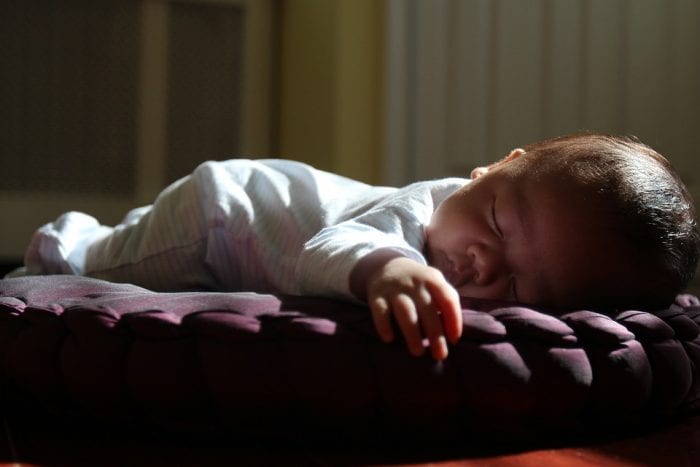
However, a sense of dread takes hold.What if this skill gets them stuck when they nap? What about suffocation? And then there is SIDS (Sudden Infant Death Syndrome)! As soon as this achievement is attained, there are all these endless, scary possibilities, which can be restless nights for you and your whole family. Well, don’t get too worried too quickly. There are a few things you need to know about safe infant sleep.
First off, celebrate the achievement of your baby because that is what it is! This is one of the child’s developmental milestones.
What If My Baby Rolls And Snores While Sleeping?
Your child is growing every day and just seeing him or her transform before you is the most amazing feeling in the world.
Baby rolls over during slumber when feeling uncomfortable. When a baby begins to roll over, they engage and strengthen the upper body muscles as they lift and turn their head, push against the surface, and rotate their body. Savor this moment – even when you nap train at age 4 months – because soon your tiny, slumber baby will be crawling, walking, and then running! But until then, here are some questions you may have that can easily be answered during the time reading this.
How Do I Keep My Baby From Rolling In Sleep And Snoring?
There are a few safe solutions for this. Sleepers are an excellent way to keep your little one from rolling during sleep at night. Now sleepers are different from the swaddle.
- Do not put on a baby sleep swaddle when your baby starts rolling over during their sleep. Sleep waddles come loose and can become a suffocation hazard, especially when your baby is still trying to practice rolling.
- Make sure the baby’s sleep bed is the right size and not too big. Any loose clothing can become a suffocation hazard, including loose bedding in the sleep environment.
- You should also read about the best baby sleep tips, allowing your baby to establish a comfortable sleep routine.
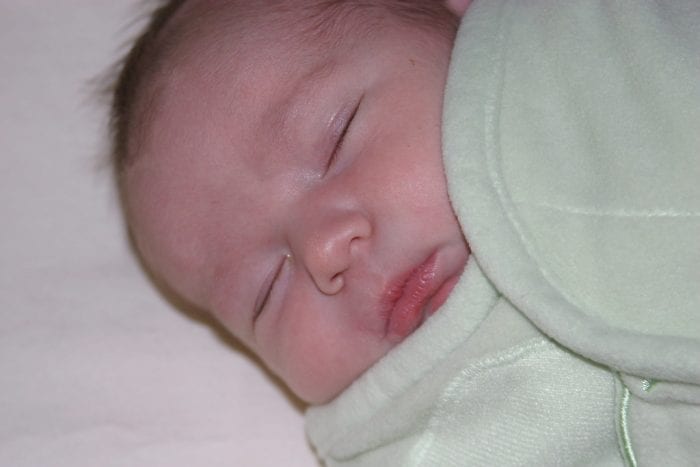
- I want to add that this is perfectly normal.
- Health professionals state that when babies start rolling, it is okay for them to be in the position of transitioning onto their stomach, shifting from back to tummy.
- Most babies typically roll from back to tummy when they are in their 5th-7th months. There is only about a week where your child will be weak at rolling and may end up stuck.
- Often time the ability to roll from tummy to back is one of the new skills babies learn after reaching 1 year old.
- If your child has fallen asleep deeply, gently roll your child back.
- So try not to worry too much. Just make sure the bed is clear of blankets, pillows, toys, any other suffocation hazards as these may cause safety concerns in the sleep environment.
- The soft glow of the nightlight and warm wind envelops the room as the gentle hum of a lullaby fills the air. Snuggled in a cozy and comfortable blanket, the child peacefully drifts into dreamland, their rhythmic breaths creating a soothing melody. With a favorite stuffed animal nestled close, the warmth of the bed cradles the little one in a world of comfort, ensuring a serene and undisturbed nap.
Baby Rolls Over In Sleep: What To Do?
What if your child rolls onto their stomach while they nap? Should you let your child roll over at all? As I said earlier, young babies are fine to nap on their stomachs if they roll over onto it. Now, I want to remind you that you should never lay your child on their stomach. Make sure you put them to nap on their back following safe child napping guidelines.
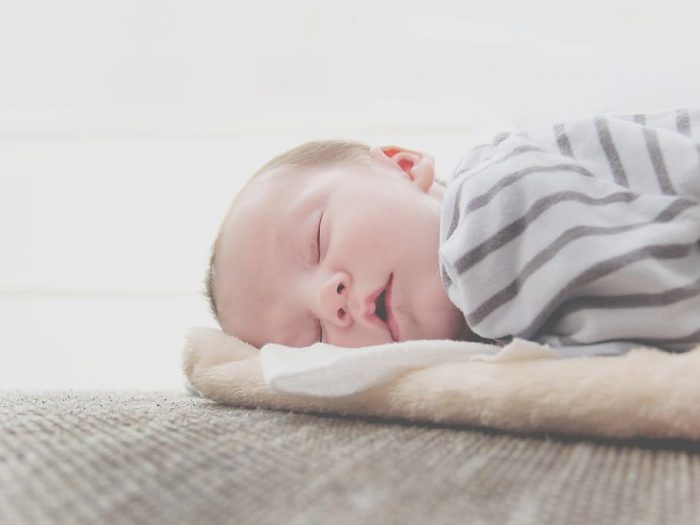
Can He Be In Sleep Sacks When They Sleep Roll Over?
Yes, that’s totally fine and completely safe. They can wear nap sacks as long as they allow movement of the arms, a recommendation supported by most doctors. When you sleep train, your child needs to have access to moving their arms so if they get stuck or need to roll back over.
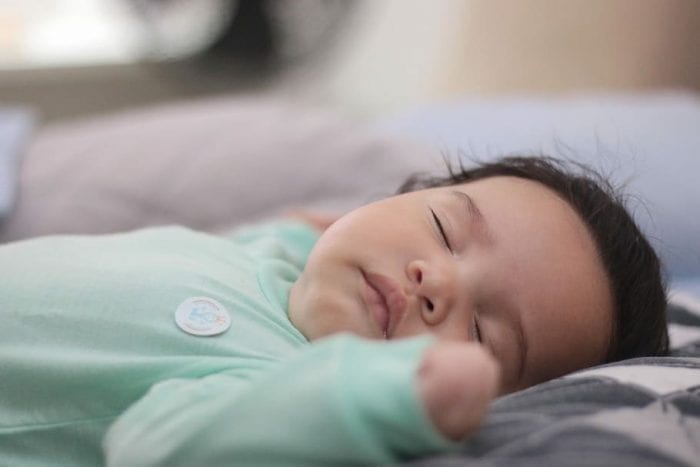
Baby Turning Over In Sleep And SID In Sleeping Babies
SIDS or Sudden Infant Death Syndrome is something many parents find themselves worrying about. This is especially true for infants up to around 6 months. 6-month-old babies are still at risk for SIDS all the way up until they are a year old.
On the other hand, you can do a supervised tummy time or lay your child on his stomach while they’re awake. Tummy time actually improves upper body strength. It strengthens your baby’s head, back, spine, neck muscles. It’s scary, but safe practices and a safe sleeping space go a long way in keeping your baby safe. Additionally, avoiding placing soft objects or loose bedding in the crib further reduces the suffocation risk.

Can I Let My 6-Month-Old Sleep On Their Stomach?
When you put your 6-month-old to sleep, make sure to put them on their back. It is okay for kids to move to a new position while sleeping, but to practice safe sleep, always put them on their backs.
Make sure to always take precautionary measures. Remove all items like pillows and loose blankets from the crib, bassinet, or sleeping area. Ensure that there are no bumpers or child sleep positioners in the crib, as these can pose a dangerous suffocation hazard due to their fluffy, pillow-like nature, and they may increase the risk of SIDS.
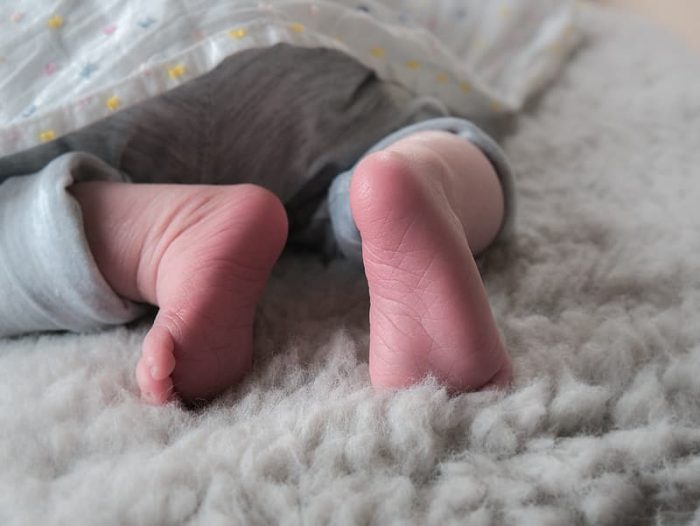
Can I Let My Child Sleep Lying Back?
Again, when you lay your baby in their bed, make sure to put them on their back. This is always the safest solution. Just practice safe sleeping by providing a safe, clean environment for your baby to sleep in. Remove all toys, pillows, blankets, loose bedding, stuffed animals, and other objects. Do not have toys hanging on the sides of the crib or have a bumper. Check the sleep surface and ensure there are no gaps or a potential suffocation hazard. It is generally considered safer to have no bumper at all. Also, use a firm mattress to reduce the risk of Sudden Infant Death Syndrome (SIDS). Maintaining a safe infant sleeping environment is crucial.
Why Is My Baby Facing Down In Sleep?
Just like adults, many kids move positions to get comfortable. They may prefer lying on their tummy while sleeping rather than on their backs, and if they can do it independently, then they are fine to do so. If you are worried, which is a common concern for first-time parents, you can gently flip your baby back over. Just be forewarned that your baby may or may not wake up in the process, as they naturally shift and adjust to find a comfortable position to fall asleep.
Why Does My Baby Cry And He Rolls Over?
What if your baby rolls over during sleep and starts crying? In the beginning, when your baby starts turning and crying, they may lack the strength to flip back over and recover, leading to frustration and irritation as they attempt to find a more comfortable and convenient position. Crying is the only way they can communicate their feelings before they can speak and so this can be normal. If your baby is constantly crying, please ask for advice from your baby’s doctor in order to address any potential concerns or issues. If you have any concerns that still seem to linger, there is never harm in asking your baby’s doctor. The pediatrician is there for you, and they are the experts in providing guidance and support for your baby’s health and development. They will provide more evidence-based information that is up-to-date and safe for you to follow in caring for your baby.
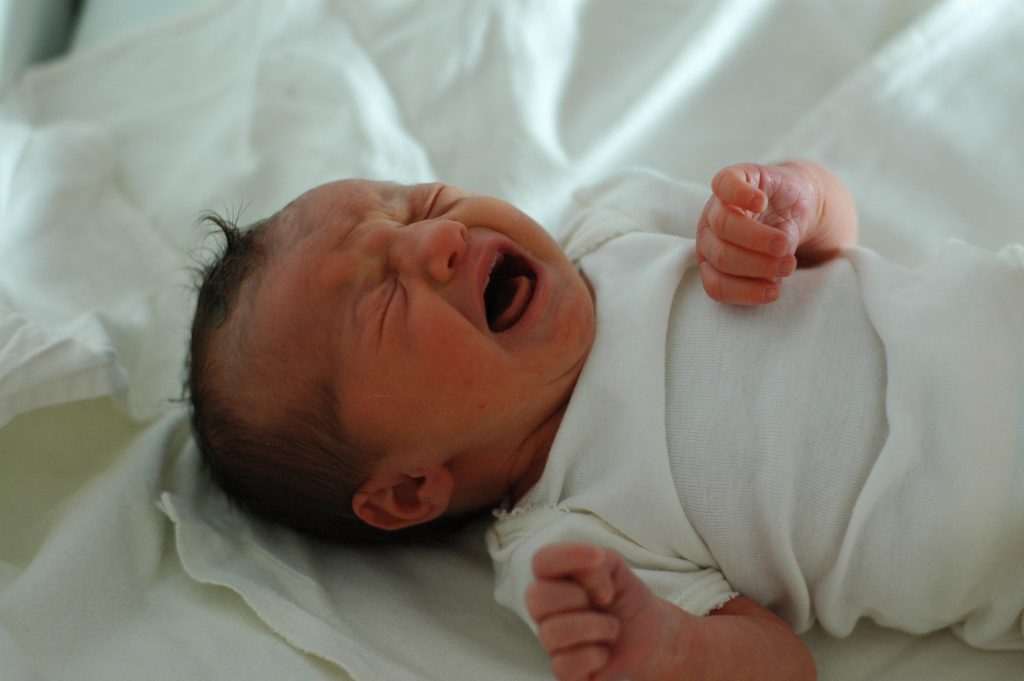
What Are The Sleep-Related Infant Deaths?
Sleep-related infant deaths encompass cases where infants die suddenly and unexpectedly during sleep. This category includes Sudden Infant Death Syndrome (SIDS), where an otherwise healthy baby passes away for unexplained reasons, and accidental suffocation or strangulation in bed, often involving factors like entanglement in bedding.
What’s The Safe Infant Sleeping Environment?
A safe crib for a baby, especially during the new milestone of turning over, should have a firm mattress and a snug-fitting crib sheet, keeping the crib clear of soft bedding and toys to reduce the risk of Sudden Infant Death Syndrome (SIDS). Ensure the crib is sturdy, regularly inspect for damage, and avoid drop-side cribs. Choose a crib with adjustable mattress height and certifications like JPMA or ASTM to meet safety standards. Creating a secure sleep environment is essential for your baby’s well-being, allowing them to move and explore safely as your baby moves and grows.
Infant Turning Over In Sleep: Conclusion
Your baby rolling over is just another stepping stone for them to achieve independence. Babies often sleep on their stomachs when they start to roll in their sleep. Don’t be alarmed if your baby is turning onto their stomach when sleeping. This is just a natural achievement. Just make sure you take the necessary precautions that have been outlined earlier in this article, especially if your baby is able to roll.
FAQs
Is It Alarming If Babies Rolls In Sleep?
No, it’s not a cause for concern if a turning baby turns during sleep, especially after reaching the developmental milestone of around 4 to 6 months. At this stage, turning typically becomes one of the abilities of kids, and it’s considered a normal part of their development. However, it’s crucial to maintain a safe sleep environment by placing the baby on their back, removing potential hazards from the crib, and never leaving an unattended baby’s crib to minimize any risks when sleeping at night.
Does Baby Sleep Better After He Sleep Rolls?
Why Is My Baby Turns Over And Starts Crying At Night Or In Sleep And Cries?
If your baby turns over and starts crying in their sleep, it could be a natural response to the development of this new skill and mindset. The movement might startle and discomfort them. To help your baby, ensure a safe and comfortable sleep environment during the night, use comfortable night sleep attire, and consider incorporating a consistent bedtime routine during the night. If crying persists or you have concerns, consulting with your pediatrician can provide personalized guidance and reassurance to help your baby through this phase.
What Happens If Baby Starts Rolling Over?
If your baby starts to roll over onto their tummy at night, it’s a common developmental milestone that usually occurs around 4 to 6 months of age. This newfound ability is a sign of growing strength. Let them sleep in their preferred position. Maintain a safe sleep environment, free of hazards, and consult your pediatrician for personalized guidance.
How Do I Stop My Baby To Turning Over In The Night?
Place your baby on their back to sleep in a safe environment, avoiding soft beddings. If your baby turns in the night and has a hard time turning back, gently reposition them onto their back. Consider sleep sacks for added security and transition to a crib for more space. It prevents excessive turning in their sleep.
Do Sleep Sacks Prevent Turning?
Are Sleep Sacks Safe For Babies Turning?
Is SIDS Caused By Baby Turning?
Sudden Infant Death Syndrome (SIDS) is not caused by a baby turning over. SIDS refers to the unexplained sudden death of an otherwise healthy infant, often in their sleep. While certain sleep positions may increase SIDS risks, turning over itself is not a direct cause. Following safe sleep practices, such as placing babies on their backs to slumber. Once a baby can roll independently (around 4 to 6 months), it’s okay to make them slumber.
Is It OK For A 6-Month-Old To Nap On Their Belly?
For a 6-month-old, it is generally considered safe if they can independently roll over the night. Always start by placing your baby on their back when putting them to sleep during nighttime, following guidelines to reduce the risk of Sudden Infant Death Syndrome (SIDS).
Does Turning Cause Sleep Regression?
Turning itself doesn’t directly cause regression, but the developmental milestone can coincide with changes in a baby’s napping patterns. When babies start to roll over, it may briefly disrupt routines as they adjust to new positions.
Do Babies Cry When They Roll Over?
Yes, it’s not uncommon for babies to cry when they first learn to roll over. The process can be unfamiliar and may cause discomfort as they find themselves in an uncomfortable position, leading to crying.
How Long Does Turning Sleep Regression Last?
The disruption associated with a baby learning to roll over typically lasts a few days to a few weeks.
How Do Autistic Kids Lie On Their Back Then Get Back Up Again?
Autistic babies generally roll over like their neurotypical counterparts, as autism primarily affects social communication and behavior rather than specific motor skills.
Why Infants Roll Over, Snore In Their Sleep?
How Long Do Small Infants Lie On Their Back When They Are In Deep Sleep?
Last Updated on May 13, 2023 by Harold Chan
DISCLAIMER (IMPORTANT): This information (including all text, images, audio, or other formats on FamilyHype.com) is not intended to be a substitute for informed professional advice, diagnosis, endorsement or treatment. You should not take any action or avoid taking action without consulting a qualified professional. Always seek the advice of your physician or other qualified health provider with any questions about medical conditions. Do not disregard professional medical advice or delay seeking advice or treatment because of something you have read here a FamilyHype.com.